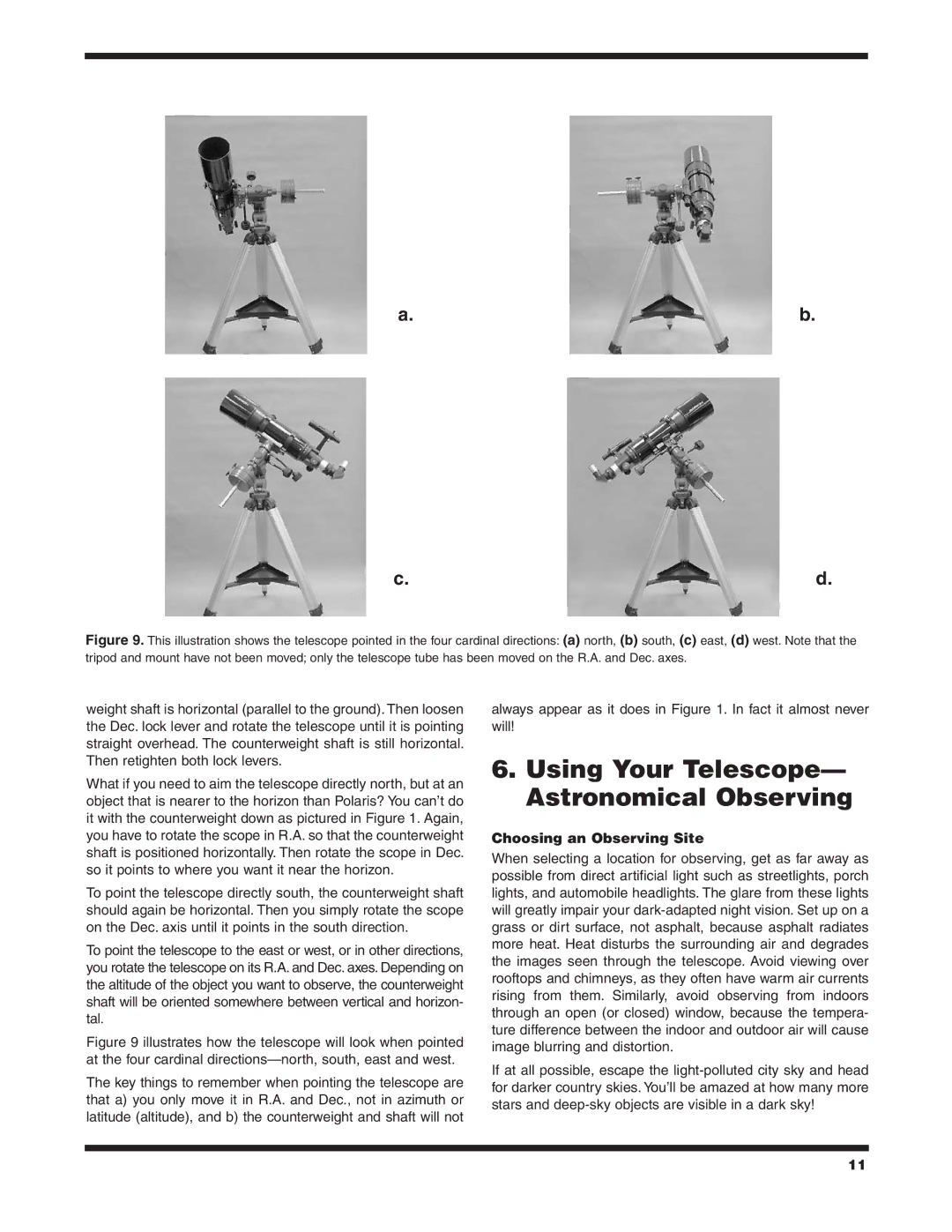
a.b.
c.d.
Figure 9. This illustration shows the telescope pointed in the four cardinal directions: (a) north, (b) south, (c) east, (d) west. Note that the tripod and mount have not been moved; only the telescope tube has been moved on the R.A. and Dec. axes.
weight shaft is horizontal (parallel to the ground). Then loosen the Dec. lock lever and rotate the telescope until it is pointing straight overhead. The counterweight shaft is still horizontal. Then retighten both lock levers.
What if you need to aim the telescope directly north, but at an object that is nearer to the horizon than Polaris? You can’t do it with the counterweight down as pictured in Figure 1. Again, you have to rotate the scope in R.A. so that the counterweight shaft is positioned horizontally. Then rotate the scope in Dec. so it points to where you want it near the horizon.
To point the telescope directly south, the counterweight shaft should again be horizontal. Then you simply rotate the scope on the Dec. axis until it points in the south direction.
To point the telescope to the east or west, or in other directions, you rotate the telescope on its R.A. and Dec. axes. Depending on the altitude of the object you want to observe, the counterweight shaft will be oriented somewhere between vertical and horizon- tal.
Figure 9 illustrates how the telescope will look when pointed at the four cardinal directions—north, south, east and west.
The key things to remember when pointing the telescope are that a) you only move it in R.A. and Dec., not in azimuth or latitude (altitude), and b) the counterweight and shaft will not
always appear as it does in Figure 1. In fact it almost never will!
6.Using Your Telescope— Astronomical Observing
Choosing an Observing Site
When selecting a location for observing, get as far away as possible from direct artificial light such as streetlights, porch lights, and automobile headlights. The glare from these lights will greatly impair your
If at all possible, escape the
11
